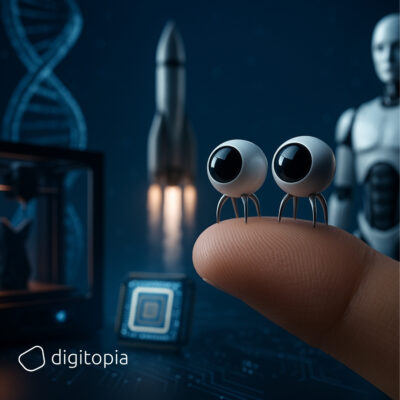
Imagine a future where your thoughts become your commands, seamlessly translating intent directly into action. Welcome to the revolutionary world of Brain Computer Interfaces (BCI)—a groundbreaking technology bridging the human brain and external devices, opening doors previously considered purely science fiction. As these remarkable concepts transition into everyday reality, BCIs promise to redefine the very essence of personal, professional, and societal interaction, pushing human potential into uncharted territory.
What is a Brain Computer Interface?
Brain Computer Interfaces facilitate direct communication between neural signals and digital devices, enabling interactions without the need for physical motion. Initially conceived as medical solutions—empowering paralysis patients to regain mobility—today, BCIs offer tremendous potential across various industries. Brain computer interface applications are reshaping business models, consumer behaviors, and social structures. The ability to interpret and harness human neural signals opens limitless possibilities, empowering society to transcend traditional physical, cognitive, and experiential limitations.
Key Trends and Developments in Brain Computer Interface Applications
Brain computer interface applications are rapidly evolving, driven by continuous innovations in technology, neuroscience, and machine learning. Understanding these key trends helps organizations capitalize on opportunities and anticipate disruptions.
Non-invasive Innovation:
Early BCI developments primarily involved invasive surgical procedures. Recent breakthroughs in EEG (electroencephalography) and wearable headsets now allow non-invasive BCI systems to decode brain signals, significantly lowering adoption barriers and enabling broader, more practical everyday applications.
Real-time Neural Decoding:
Advancements in artificial intelligence and machine learning technologies have made instantaneous decoding of complex neural signals a reality. These capabilities transform human-computer interactions, allowing highly intuitive and precise thought-driven control of devices.
Personalized Neuromodulation:
BCIs now offer highly personalized experiences by adapting in real-time to individual neural patterns. This personalization presents new frontiers in cognitive enhancement, mental health, productivity, and user engagement.
Integration with Emerging Technologies:
BCIs increasingly intersect with augmented reality (AR), virtual reality (VR), and the Internet of Things (IoT). This convergence promises extraordinary immersive experiences, amplifying user capabilities and interactions in profound new ways.
Practical and Visionary Brain Computer Interface Applications Across Industries
Brain computer interface applications are not only transforming healthcare but also revolutionizing education, customer experience, gaming, and cybersecurity. Explore these practical and visionary use cases:
1. Enhanced Workplace Productivity:
Imagine a workplace where machinery, software, and robotics respond effortlessly to your thoughts. Brain computer interface applications could redefine productivity, eliminating physical fatigue and mental friction. Industries such as logistics, manufacturing, aviation, and creative sectors stand poised for radical transformation.
2. Revolutionary Healthcare Solutions:
Healthcare is a leading adopter of brain computer interface applications, with breakthroughs ranging from neural-controlled prosthetics and robotic exoskeletons to neurorehabilitation therapies. Personalized mental health treatments and stress management tools are next in line.
3. Immersive Customer Experiences:
Imagine retail experiences where products are selected merely by thinking about them. Marketers could leverage brain computer interface applications to create profoundly personalized consumer journeys through real-time neural analytics.
4. Education and Training Reinvented:
Education and training could undergo dramatic transformations. Adaptive learning platforms could interpret cognitive load, concentration, and emotional states to optimize knowledge transfer, personalizing each learning experience.
5. Gaming and Entertainment:
The gaming and entertainment industry can harness brain computer interface applications for deeply immersive and personalized experiences. Players could control environments intuitively through thought alone.
6. Security and Authentication:
BCI technology might revolutionize cybersecurity and personal authentication by using unique brainwave signatures for highly secure identity verification, reducing vulnerabilities linked to passwords and biometrics.
Top Leading Vendors in the Brain Computer Interface Space
Several pioneering companies are accelerating brain computer interface applications across industries:
Neuralink
Developing invasive brain-machine interfaces aiming for high-bandwidth communication between brains and devices.
Kernel
Focusing on non-invasive brain interface technologies enhancing human cognition and mental wellness.
Emotiv
Leading the EEG-based wearable BCI market, democratizing access to brain computer interface applications for productivity, gaming, and wellness.
Synchron
Pioneering minimally invasive BCIs with clinical trials for neural control of external devices.
Neurable
Combining neuroscience and AI to deliver practical EEG-based BCI solutions across VR, AR, and productivity tools.
Precision Neuroscience
Specializing in ultra-thin cortical implants expanding therapeutic possibilities for neurological disorders.
OpenBCI
Providing open-source BCI platforms and fostering global innovation in brain computer interface applications.
Leading Institutions Shaping the Future of Brain Computer Interface Research
Top global institutions are pushing the frontiers of brain computer interface applications:
Massachusetts Institute of Technology (MIT), USA: Renowned for pioneering non-invasive, wearable BCI technologies for cognitive enhancement and everyday applications.
Stanford University, USA: Merging neuroscience, neurosurgery, engineering, and AI for transformative neural implants.
University of California, Berkeley, USA: Leading adaptive neurotechnology, neural decoding, and robotic integration research.
ETH Zurich, Switzerland: Excelling in cognitive enhancement and neural implant innovations, integrating neuroscience with robotics and AI.
Imperial College London, UK: Driving research on brain-machine interfaces and therapeutic neural applications in collaboration with clinical partners.
These institutions are at the forefront of advancing brain computer interface applications, shaping the future of this revolutionary technology.
What if You Could Chip Your Customer?
Imagine a hypothetical scenario where customers are implanted with microchips, enabling real-time monitoring of physiological and emotional data. Brain computer interface applications could dramatically enhance customer experience by offering hyper-personalized products, services, and interactions.
While physically chipping customers is ethically complex, businesses today already have powerful tools—mobile devices and social media—to gather behavioral and emotional data. By ethically leveraging this information with AI and advanced analytics, companies can achieve insights comparable to those from direct neural monitoring, enhancing customer satisfaction while maintaining trust.
Three Possible Futures for Brain Computer Interface Applications
The Pessimistic Scenario:
Brain computer interface applications are misused, leading to privacy breaches, manipulation, and increased inequality. Public backlash and stringent regulations stifle innovation.
The Optimistic Scenario:
Brain computer interface applications empower individuals, eliminating physical and cognitive barriers, enhancing education, healthcare, and quality of life through responsible innovation and ethical governance.
The Moderate Scenario:
A balanced path emerges where brain computer interface applications develop gradually under strict regulatory frameworks, ensuring progress while safeguarding privacy and societal trust.
Strategic Implications and Recommendations for Executives
- Stay Curious and Informed: Regularly engage with emerging research and BCI developments. Early awareness positions organizations advantageously.
- Evaluate Practical Applications: Proactively identify feasible BCI use-cases tailored to your business. Early integration creates substantial competitive differentiation.
- Form Strategic Partnerships: Establish collaborations with technology providers, academia, and startups to enhance capabilities, accelerate innovation, and maximize impact.
- Address Ethical Concerns Proactively: Implement robust governance frameworks addressing privacy, data security, ethical usage, and consent, establishing trust and transparency with stakeholders.
- Prepare Your Workforce: Invest in education and training to build employee familiarity and readiness for the adoption of BCIs, facilitating seamless integration and maximizing productivity.
The future belongs to visionary leaders bold enough to embrace innovation. Brain-Computer Interfaces present executives with an unparalleled opportunity to revolutionize not just their businesses, but also redefine human capability and experience in profound, transformative ways.



